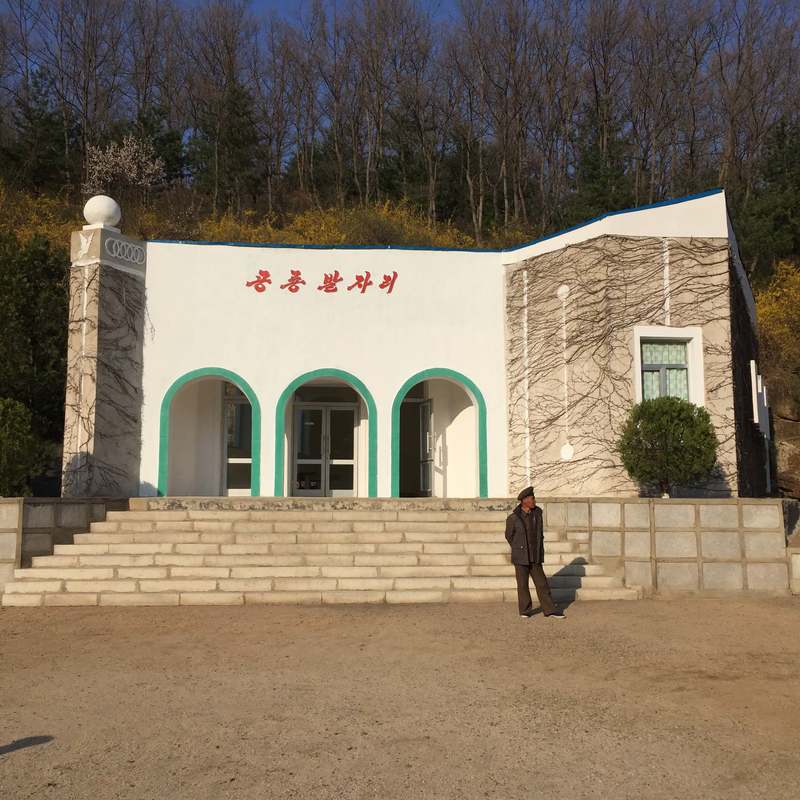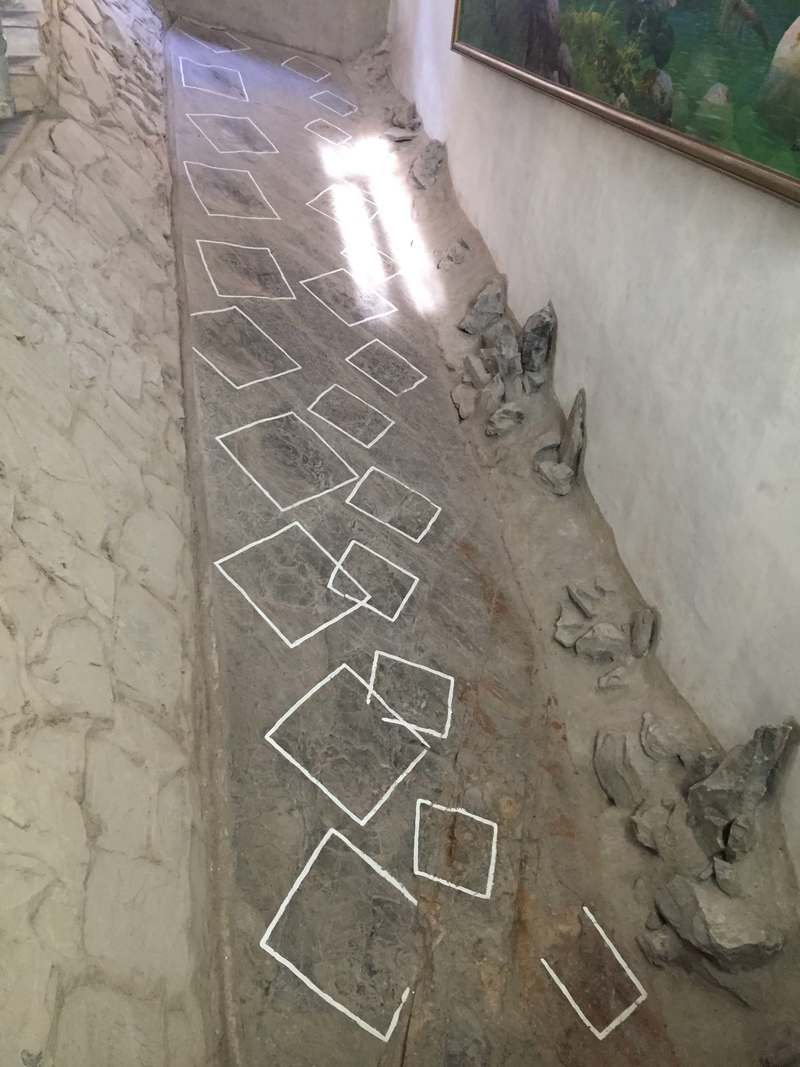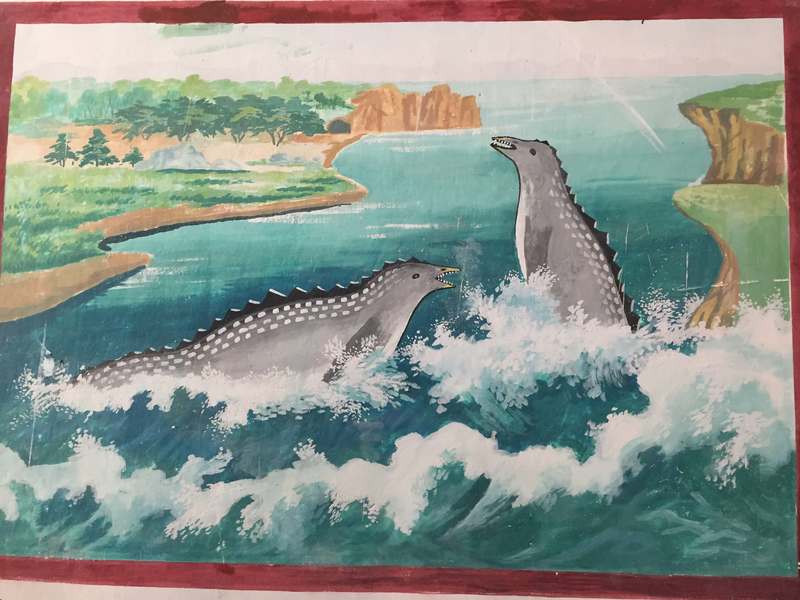Dinosaur Footprint and Fossils
Dinosaur Footprints & Fossils
Introduction
Location
Visiting
Cost
Tips
Further Information
Introduction
On the Pyongyang-Kaesong Highway is a strong contender for North Korea's No.1 roadside attraction: a set of dinosaur footprints and plant fossils.
This small attraction is an interesting place to stop for a 10-minute leg stretch on the drive back to Pyongyang.
Location
Located on the east side of the Pyongyang-Kaesong Highway between the county-seats of Pyongsan and Kumchon, this site is accessible when heading north.
Visiting
Housed inside a white plaster building, the main set of footprints were discovered in January of 1990 during road maintenance.
When you enter the small hall, there is a foreign dinosaur documentary dubbed in Korean about the end of the dinosaur age that you can watch before heading to the back of the building where the footprints are on display.
Take the time to examine the classic science and dinosaur paintings. Favourites are the hand-painted timeline of the universe, starting with the Big Bang and ending with the penultimate masters of the universe, man (or should we say 'He-man'?), and one of some happily swimming dinosaurs.
The original discovered track was about 100 meters long, 15 meters wide, and at a 20-degree slant, emerging from a rock face. The tracks are thought to have been left behind by two dinosaurs, an adult and baby, walking together. Only part of the track is on display.
Outside of the hall, there are some more footprints on display, supposedly from a flying dinosaur, as well as some fossil plants.
Cost
The entry fee is nominally $2 per person. For large groups, it is possible to pay $1 per person.
Tips
-
Usually by the time of visiting everyone on the bus is asleep, after a visit to Kaesong and the DMZ, but it is well worth waking people up to see this bit of pre-historic fun. After all, what is a vacation without roadside attractions?
-
Lighting is very bad for photography inside the building with just one small window providing light, not much can be done about this unfortunately.
Further Information
- The footprints are thought to date back to 80-100 million years ago, which actually makes them from the Cretaceous Era (65-145 million years ago).
- At the time of impression, much of what is today western Korea from Sinuiju through Pyongyang and Sariwon on to Pyongsan and Kumchon, would have been a series of lakes, rivers, and swamp lands, ripe for laying down sedimentary deposits and fossils. Later geologic upheavals lifted and twisted these formations out of their original positions. Along the highway, you can see evidence of such metamorphism. Metamorphic marble is also mined in the region.
Interested in a tour to North Korea?
Travel to North Korea with the only
North Korea travel experts, Koryo Tours
North Korea Travel Guide PDF | Sign up to the mailing list | About Koryo Tours


